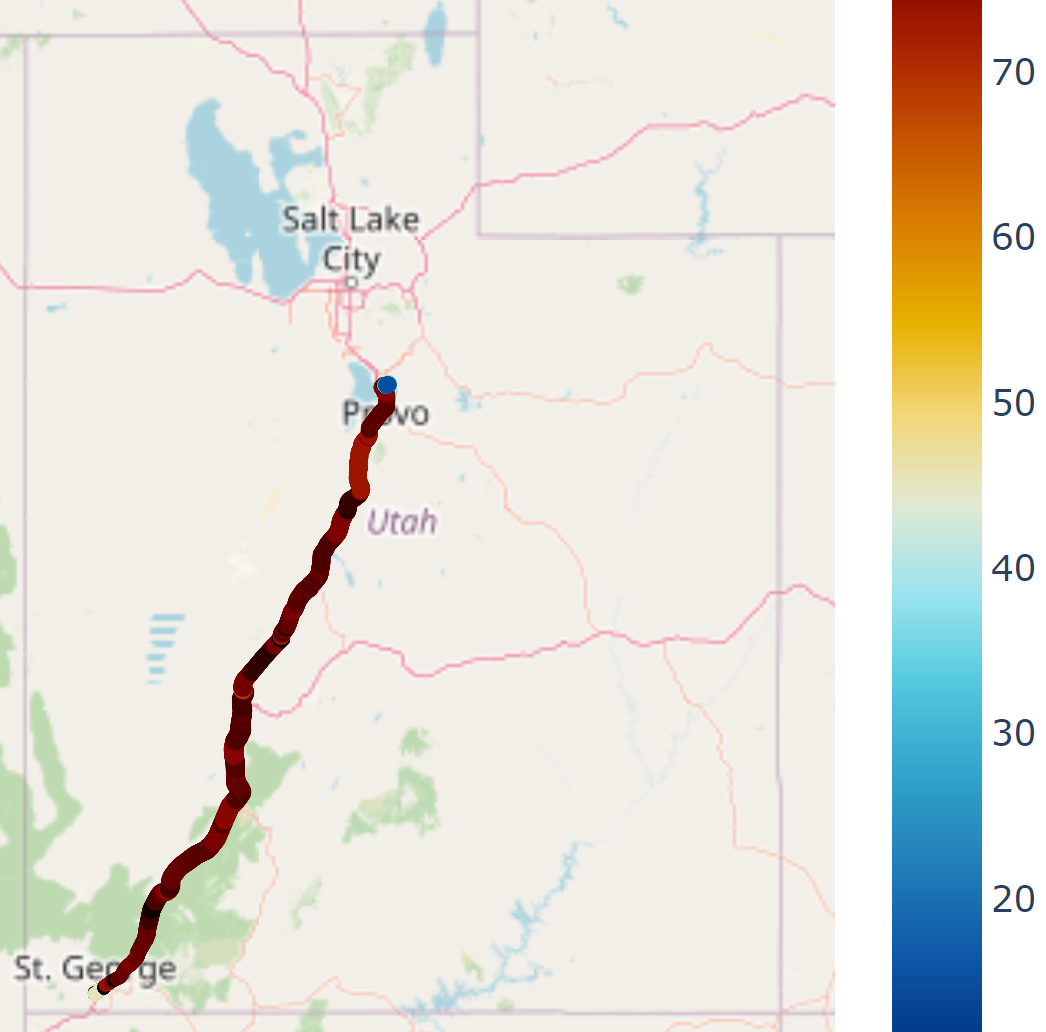The purpose of this exercise is to demonstrate the use of Pandas DataFrames to import, cleanse, and view data. Automotive data is available from OBD-II codes that are standard for engine monitoring of light duty vehicles (passenger cars) starting in year 1996. Newer vehicles may include additional sensors from other electronic systems such as the brake system, tire pressure, climate control, and transmission. Data is processed with on-board computers to monitor the health of the vehicle systems and provide warning diagnostics when there is an indication of malfunction.
 Data: Data is collected from a 2014 Ford Focus (manual transmission) and a 2021 Chrysler Pacifica minivan with city and freeway driving:
Data: Data is collected from a 2014 Ford Focus (manual transmission) and a 2021 Chrysler Pacifica minivan with city and freeway driving:- Provo to St. George, Utah (~8 hrs), 40 columns, 2014 Ford
- Des Moines to Pella, Iowa (~1 hr), 46 columns, 2021 Chrysler
Data set 1 is collected with the ELM327 module with raw sensor data and calculated values that are collected with Car Scanner (App) from the OBD-II codes through a Bluetooth connection. Data set 2 is collected with an OBDLink MX+ OBD-II module through a Bluetooth connection.
Case Study: GIS Map Visualization
Objective: Import automotive data as a Pandas DataFrame. View the route on a map with the speed and elevation.
Geographic Information Systems (GIS) are used to create, manage, analyze, and map data. GPS is used to identify the location of the vehicle. Car data and location data are in a single data file. This exercise demonstrates the use of Pandas DataFrames to import, cleanse, and view data.


